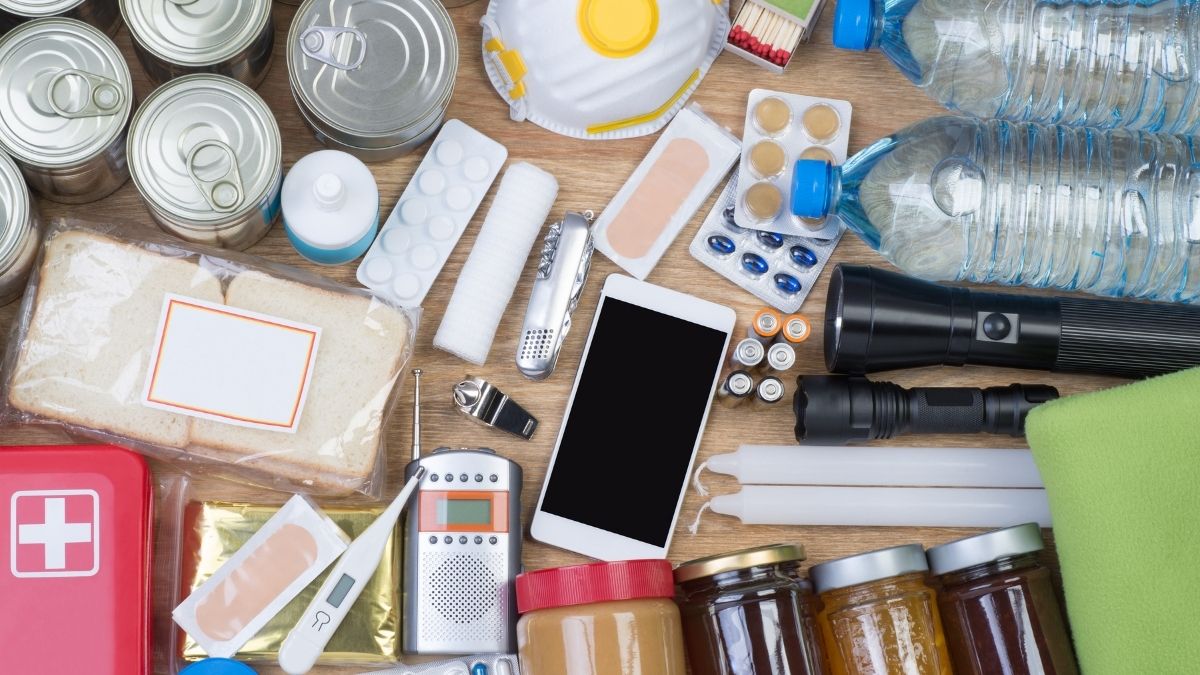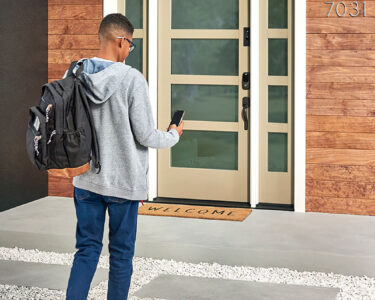Emergencies can happen in the blink of an eye. To keep you and your family safe, it’s wise to have a household emergency kit prepared and stored in a place that’s easily accessible. An emergency kit can help you get through all kinds of situations. You might need a flashlight and a wireless charger during a temporary power outage, or enough supplies to last you through a week-long storm. These tips for packing a household emergency kit will help you survive whatever Mother Nature throws your way.
What To Pack
Your emergency kit should contain a variety of items. You should store these items in airtight plastic bags and put the entirety of your kit into one or two easy-to-carry containers, like plastic bins or a duffel bag. In general, your kit should include:
- Battery-powered or hand crank radio
- Cell phone with chargers and a backup battery
- Dust mask
- Extra batteries
- First-aid kit
- Flashlight
- Food
- Local maps
- Manual can opener
- Moist towelettes, garbage bags, and plastic ties
- Plastic sheeting and duct tape
- Water
- Whistle
- Wrench or pliers
The food you include should be non-perishable. Some great options include canned meats, vegetables, fruits, soups, rice, pasta, cereals, and granola bars.
When you’re picking out a flashlight, consider opting for a tactical flashlight instead of a regular flashlight. Tactical flashlights have a longer battery life. They’ll also put out more light than a regular flashlight, making them an essential tool for navigating at night, reaching out for help, and more. You can even opt for versions that are rechargeable.
How To Maintain Your Kit
After assembling your kit, you’ll want to perform a routine inspection of its contents and replace them as necessary. If your kit contains canned food, keep it in a cool, dry place. Boxed food should be stored in tightly closed plastic or metal containers. Any expired food items should be thrown out and replaced. Every year, you should take the time to reevaluate your household’s needs. Make sure to include additional items in the kit for each new member of your family, whether it’s another adult, a baby, or even a pet.
Where To Store Your Kit
Another tip for packing a household emergency kit is to store it in a safe, easy-to-reach place. A disaster can strike anywhere, whether you’re at home, at work, or on the road. Preparing emergency kits for all three of these places will ensure you’re always stocked with safety and other survival supplies.
Your emergency kit should be kept in an accessible place. Everyone in your family should be informed of the location of your emergency kit, including children. Make sure to keep it at a reasonable height and avoid locking it behind complicated mechanisms—this makes it harder to access. A drawer, cabinet, or your kitchen’s pantry will usually work well. At work, store your emergency kit somewhere in or near your desk. For a car or truck, make sure the kit is stored somewhere you can access without needing to exit the vehicle.














 Deering Estate
Deering Estate
 Massage Envy South Miami
Massage Envy South Miami
 Calla Blow Dry
Calla Blow Dry
 My Derma Clinic
My Derma Clinic
 Sushi Maki
Sushi Maki
 Sports Grill
Sports Grill
 The Healthy Kitchen
The Healthy Kitchen
 Golden Rule Seafood
Golden Rule Seafood
 Malanga Cuban Café
Malanga Cuban Café

 Kathleen Ballard
Kathleen Ballard
 Panter, Panter & Sampedro
Panter, Panter & Sampedro
 Vintage Liquors
Vintage Liquors
 The Dog from Ipanema
The Dog from Ipanema
 Rubinstein Family Chiropractic
Rubinstein Family Chiropractic
 Your Pet’s Best
Your Pet’s Best
 Indigo Republic
Indigo Republic




 ATR Luxury Homes
ATR Luxury Homes


 2112 Design Studio
2112 Design Studio
 Hamilton Fox & Company
Hamilton Fox & Company
 Creative Design Services
Creative Design Services
 Best Pest Professionals
Best Pest Professionals
 HD Tree Services
HD Tree Services
 Trinity Air Conditioning Company
Trinity Air Conditioning Company
 Cisca Construction & Development
Cisca Construction & Development
 Mosquito Joe
Mosquito Joe
 Cutler Bay Solar Solutions
Cutler Bay Solar Solutions


 Miami Royal Ballet & Dance
Miami Royal Ballet & Dance
 Christopher Columbus
Christopher Columbus
 Pineview Preschools
Pineview Preschools
 Westminster
Westminster
 Carrollton
Carrollton
 Lil’ Jungle
Lil’ Jungle
 Frost Science Museum
Frost Science Museum
 Palmer Trinity School
Palmer Trinity School
 South Florida Music
South Florida Music
 Pinecrest Orthodontics
Pinecrest Orthodontics
 Dr. Bob Pediatric Dentist
Dr. Bob Pediatric Dentist
 d.pediatrics
d.pediatrics
 South Miami Women’s Health
South Miami Women’s Health

 The Spot Barbershop
The Spot Barbershop
 My Derma Clinic
My Derma Clinic




 Miami Dance Project
Miami Dance Project

 Rubinstein Family Chiropractic
Rubinstein Family Chiropractic
 Indigo Republic
Indigo Republic

 Safes Universe
Safes Universe
 Vintage Liquors
Vintage Liquors
 Evenings Delight
Evenings Delight





 Atchana’s Homegrown Thai
Atchana’s Homegrown Thai
 Baptist Health South Florida
Baptist Health South Florida

 Laser Eye Center of Miami
Laser Eye Center of Miami
 Visiting Angels
Visiting Angels
 OpusCare of South Florida
OpusCare of South Florida

 Your Pet’s Best
Your Pet’s Best





 HD Tree Services
HD Tree Services
 Hamilton Fox & Company
Hamilton Fox & Company


 Creative Design Services
Creative Design Services